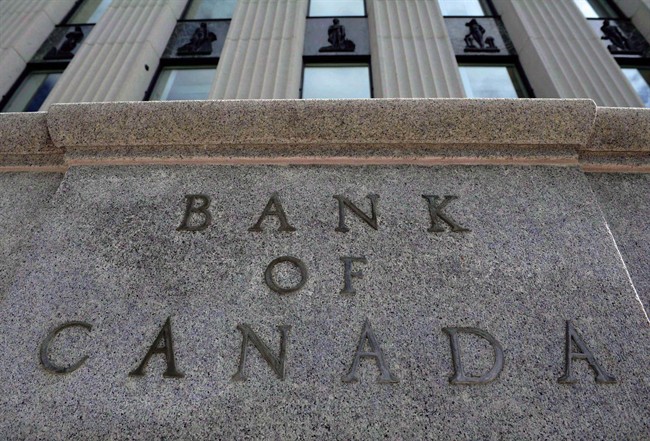OTTAWA – The Bank of Canada is leaving its trend-setting interest rate unchanged because, despite a recent run of stronger-than-expected data, it believes the economy has yet to show it can stick to the higher growth trajectory.

In holding the rate Wednesday at 0.5 per cent, the central bank said it also considered significant uncertainties still weighing on its outlook, including the unknown yet potentially adverse impacts of the U.S. economic agenda.
Canadian growth exceeded the bank’s expectations and it now predicts real gross domestic product will expand at an annual rate of 2.6 per cent in 2017 – up from its January forecast of 2.1 per cent.
READ MORE: Could you handle a 33 per cent interest-rate hike on your debt? If not, start paying it off now
The recent improvement, it said, was largely fuelled by unexpectedly robust residential investment as well as temporary factors such as the resumption of expenditures in the energy sector and the consumer-spending lift from bigger child-benefit cheques.
However, the bank also noted export growth was uneven and that signs of weakness remained present in areas like business investment and within underlying employment indicators such as hours worked and wages.
“While the recent rebound in GDP is encouraging, it is too early to conclude that the economy is on a sustainable growth path,” the bank said in a news release that explained its interest rate decision.
Beyond 2017, the bank predicted growth will moderate and become more balanced.
It anticipates greater contributions from exports and business investment. The bank also expects the powerful pace of household spending – particularly in residential investment – to eventually slow next year as debt levels and borrowing costs rise.
For this year, however, the bank believes hot housing markets in cities like Toronto will help residential investment deliver a “significantly higher” contribution to Canada’s growth performance than it had anticipated in January.
The bank also warned that climbing real estate prices in the Toronto area appear to now be driven, in part, by speculation.
Economic growth, it said, is now expected to expand by 1.9 per cent in 2018, down from the bank’s January forecast of 2.1 per cent, and to hit 1.8 per cent in 2019.
The future, however, looks murky.
READ MORE: The number of young Canadians going bankrupt is rising — but student debt isn’t the whole story
The statement said the bank’s governing council was “mindful of the significant uncertainties” faced by the Canadian economy.
In its quarterly monetary policy report, which was also released Wednesday, the bank said its outlook once again factored in some of the impacts caused by ongoing unknowns around the potential introduction of U.S. changes, especially in relation to trade and fiscal policies.
With the timing of any U.S. policy changes still unclear, the bank said its base-case projection includes only the estimated impact of “prolonged and elevated trade policy uncertainty” on trade and investment in Canada and internationally.
Changes under discussion in the U.S. include the renegotiation of the North American Free Trade Agreement, corporate and personal tax cuts, regulatory easing and a potential border tariff.
The bank said Canadian firms “remain wary” over potential U.S.-related developments that could increase protectionism and reduce competitiveness in the event of corporate tax reductions and regulatory changes.
Due to an expected additional drag on global investment connected to U.S. trade policy uncertainty, the report included slightly lower projections for export growth in 2017 and 2018 compared to the bank’s earlier predictions.
The bank also pointed to the U.S. trade-policy unknowns, and the fact it now expects them to drag on longer than expected, in its decision to revise down its prediction for business investment in 2017.
“A notable increase in global protectionism remains the most-important source of uncertainty facing the Canadian economy,” the bank said.



Comments